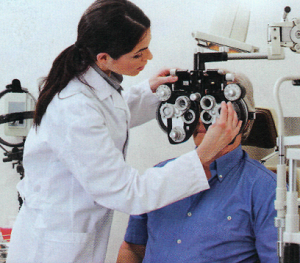


Diabetic retinopathy, the most common diabetic eye disease, occurs when blood vessels in the retina change. Sometimes these vessels swell and leak fluid or even close off completely. In other cases, abnormal new blood vessels grow on the surface of the retina.
There are two types of diabetic retinopathy:
1: Non-proliferative diabetic retinopathy (NPDR) is the earliest stage of diabetic retinopathy. With this condition, damaged blood vessels in the retina begin to leak extra fluid and small amounts of blood into the eye.
2: Proliferative diabetic retinopathy (PDR) mainly occurs when many of the blood vessels in the retina close, preventing enough blood flow.
The only way to detect diabetic retinopathy and to monitor its progression is through a comprehensive eye examination by an ophthalmologist. It's important for people with diabetes to have regular eye exams that include dilation of the eye and examination of the retina.
The condition is sometimes treated with laser surgery, traditional surgery or injection of medications. But the best treatment is prevention. Strict control of your blood sugar will significantly reduce the long-term risk of vision loss.
Source: American Academy of Ophthalmology
Good Neighbor Pharmacy Health Connection, August 2013